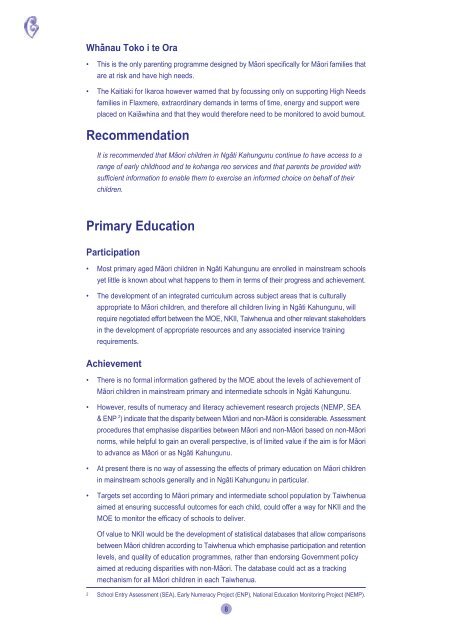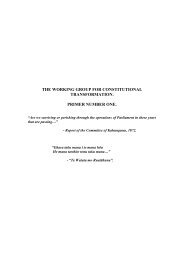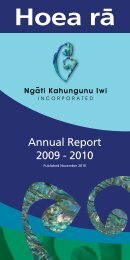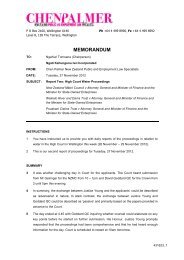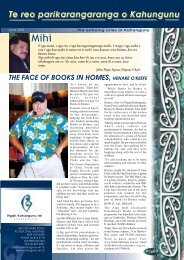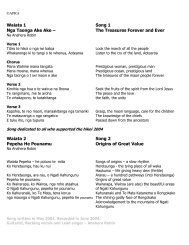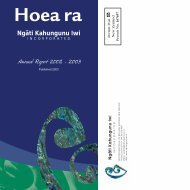Matauranga Strategy - NgÄti Kahungunu Iwi Incorporated
Matauranga Strategy - NgÄti Kahungunu Iwi Incorporated
Matauranga Strategy - NgÄti Kahungunu Iwi Incorporated
You also want an ePaper? Increase the reach of your titles
YUMPU automatically turns print PDFs into web optimized ePapers that Google loves.
Whänau Toko i te Ora<br />
• This is the only parenting programme designed by Mäori specifically for Mäori families that<br />
are at risk and have high needs.<br />
• The Kaitiaki for Ikaroa however warned that by focussing only on supporting High Needs<br />
families in Flaxmere, extraordinary demands in terms of time, energy and support were<br />
placed on Kaiäwhina and that they would therefore need to be monitored to avoid burnout.<br />
Recommendation<br />
It is recommended that Mäori children in Ngäti <strong>Kahungunu</strong> continue to have access to a<br />
range of early childhood and te kohanga reo services and that parents be provided with<br />
sufficient information to enable them to exercise an informed choice on behalf of their<br />
children.<br />
Primary Education<br />
Participation<br />
• Most primary aged Mäori children in Ngäti <strong>Kahungunu</strong> are enrolled in mainstream schools<br />
yet little is known about what happens to them in terms of their progress and achievement.<br />
• The development of an integrated curriculum across subject areas that is culturally<br />
appropriate to Mäori children, and therefore all children living in Ngäti <strong>Kahungunu</strong>, will<br />
require negotiated effort between the MOE, NKII, Taiwhenua and other relevant stakeholders<br />
in the development of appropriate resources and any associated inservice training<br />
requirements.<br />
Achievement<br />
• There is no formal information gathered by the MOE about the levels of achievement of<br />
Mäori children in mainstream primary and intermediate schools in Ngäti <strong>Kahungunu</strong>.<br />
• However, results of numeracy and literacy achievement research projects (NEMP, SEA<br />
& ENP 2 ) indicate that the disparity between Mäori and non-Mäori is considerable. Assessment<br />
procedures that emphasise disparities between Mäori and non-Mäori based on non-Mäori<br />
norms, while helpful to gain an overall perspective, is of limited value if the aim is for Mäori<br />
to advance as Mäori or as Ngäti <strong>Kahungunu</strong>.<br />
• At present there is no way of assessing the effects of primary education on Mäori children<br />
in mainstream schools generally and in Ngäti <strong>Kahungunu</strong> in particular.<br />
• Targets set according to Mäori primary and intermediate school population by Taiwhenua<br />
aimed at ensuring successful outcomes for each child, could offer a way for NKII and the<br />
MOE to monitor the efficacy of schools to deliver.<br />
Of value to NKII would be the development of statistical databases that allow comparisons<br />
between Mäori children according to Taiwhenua which emphasise participation and retention<br />
levels, and quality of education programmes, rather than endorsing Government policy<br />
aimed at reducing disparities with non-Mäori. The database could act as a tracking<br />
mechanism for all Mäori children in each Taiwhenua.<br />
2 School Entry Assessment (SEA), Early Numeracy Project (ENP), National Education Monitoring Project (NEMP).<br />
8


